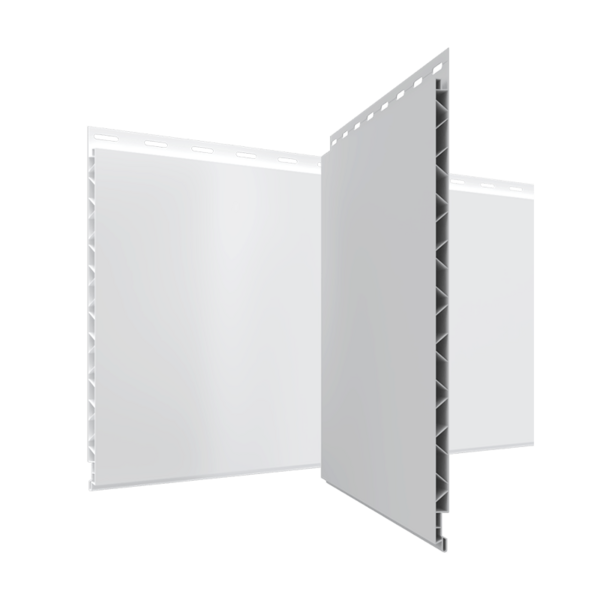With a bumpy 2022 in the rear-view mirror and more potential for turbulence ahead, 2023 won’t be without its challenges. But there’s still plenty of reason for opportunity for growth, says the Trusscore chief executive.
- Uncertainty in the wake of the pandemic, plus rising prices, interest rate hikes, and recession fears, have generated caution as a new year looms
- Suppliers and manufacturers that can promise quick delivery of building materials will be welcomed as companies reduce field inventory and guard their cash as a hedge against a slowing economy
- Green and sustainability initiatives will continue to find a home, as climate concerns grow
- Expect labor shortages to continue to have an outsized impact on building projects, and for companies to seek ways to ease the shortages, including adopting the use of labor-saving materials
- Technology will drive changes in materials, tools, and processes

The arrival of a new year is traditionally a cause for optimism and hope, a marker in the calendar where we set behind us the difficulties of the previous 12 months and pledge to set forth bravely and set things to the good. A clean slate, as it were.
As I look ahead for 2023, it feels like we’re all stepping into the new year with a bit of caution on our minds. There’s talk of a recession. Inflation and rising prices have bitten into disposable incomes. Rising interest rates, a housing shortage, and rising rents are challenging a basic human need – shelter.
It’s a lot to absorb, and we’re still finding our footing in the wake of the pandemic.
The construction and building materials industries are hardly immune, of course, to buffeting caused by outside forces. But that doesn’t mean there’s not plenty to feel upbeat about for the coming 12 months. Periods of transition can be drivers of change and opportunity, and I see plenty of both shaping up for 2023.
Broad strokes, I think there’s plenty of reason for optimism. I think the labor shortage will continue to have an over-sized impact on construction, and will do so in multiple ways. I think that supply chain problems (which have admittedly eased recently), will generate opportunity for those suppliers able to guarantee timely delivery. I think technology will continue to play a developing role as companies seek labor efficiencies and cost savings.
Here are five construction and building material trends that I think will shape 2023:
 1. Help wanted
1. Help wanted
The shortage of skilled construction workers is a serious issue that needs immediate attention. There are several steps companies can take to ease the shortage and reduce the impact on their operations.
a.) Build with easier-to-install materials. Trusscore Wall&CeilingBoard is a perfect example of a product that installs faster and easier than the product it is designed to replace (drywall), and doesn’t require specialized tradespeople, like drywallers. Virtually anyone who can hold a screwdriver can install our product. If you’re a contractor, seek out likeminded products that reduce your labor needs.
b.) Support your trade school. Trusscore is in the process of finalizing a scholarship partnership with Conestoga College in Waterloo Region and we’ll have more news about this early in the new year, but consider supporting programs that will help produce more skilled workers, and consider financial assistance that eases the transition to a new career in the trades.
Leverage technology. Advances in material science, robotics, and the development of new software are changing the way the entire industry builds. Technology has typically brought about lower production costs and the need for fewer skilled workers.
 2. Deliver the goods
2. Deliver the goods
Recession worries are causing building material distribution supply chains to draw down their inventories out of fear they’ll be caught with too much cash tied up in product they can’t immediately sell. What that means is there is opportunity in the coming year for suppliers that can overcome logistics hurdles and deliver product just when it’s needed. Doing so allows builders to have confidence that there is inventory in the field close to their projects and helps them keep costs down. This has been a focus for Trusscore over the past year. We’re committed to our distribution partners and their local retail partners who can deliver our product anywhere in North America in as little as 48 hours – and doing so will be even more important for us in the coming year. Gaining trust from your customers, giving them certainty that they can count on material being available when they need it, will boost your business.
 3. Green is good
3. Green is good
With every passing year the urgency to take action that will lower greenhouse gas emissions and address climate change grows, and that’s certainly true of construction and building. In late 2022, the United Nations issued a report stating that the building and construction sector’s energy consumption and CO2 emissions are at an all-time high. This has to change. As a result, I can see a growing demand for more durable, sustainable building products – products that last longer (longevity and durability is one of the advantages of Trusscore products, by the way). Durable products reduce the need for manufacturing replacements and repairs, reducing carbon footprints in the process. Look for the emergence of more full-circle and reverse logistics, and construction site recycling programs.
 4.Recession? What recession?
4.Recession? What recession?
It seems to me that the economy is in a bit of a strange place. On one hand there’s plenty of inflationary pressure; central banks are raising interest rates as a measure to bring inflation under control, and there are growing fears that the economy will pull back in the wake of interest rate hikes. But at the same time, we have nearly full employment, so much so that there’s a shortage of workers in many sectors, and this is certainly true of the building trades. Likewise, there continues to be a housing shortage and strong demand for new residential construction. Projects are still going ahead. What does this mean for the coming year? It’s hard to tell, but I think that if there is a “housing” recession, it can’t be a deep or severe one, and housing construction projects will continue to move ahead.
 5. Tech for good. Tech for the trades
5. Tech for good. Tech for the trades
The construction industry isn’t immune from technological disruption. Massive changes are underway, with technology driving the emergence of new materials, new tools, and new processes (the shift is a large part of the reason that we recently embarked on a multi-part editorial series about how technology is changing the building trades).
Trusscore is a material science company, one with a robust research and development team. Pushing the boundaries of what’s possible, championing new and better ways of building, is at the core of what we are. To that end look no further than Trusscore Digital Paint a Concept Wall (similar to the idea of a concept car) from the Trusscore Material Science Lab – imagine, one day being able to change the color of your walls with a swipe of your smartphone.
Expect to see more technologically driven change in the construction industry over the coming year.
To sum up, while I certainly don’t want to minimize the uneven-looking landscape that appears to lie ahead for 2023, I’m also of the view that uncertainty, or difficulties, can present opportunity. They’re a reason to roll up sleeves and make change, to make things better, and put things right. That’s a building project we can all get behind for the coming year.
Dave Caputo is a serial tech entrepreneur and the Chief Executive Officer of Trusscore.
Wall&CeilingBoard
Trusscore Wall&CeilingBoard is an interlocking, interior PVC wall and ceiling panel that is lightweight, low maintenance, and outperforms alternative products like drywall and FRP.
Learn More



